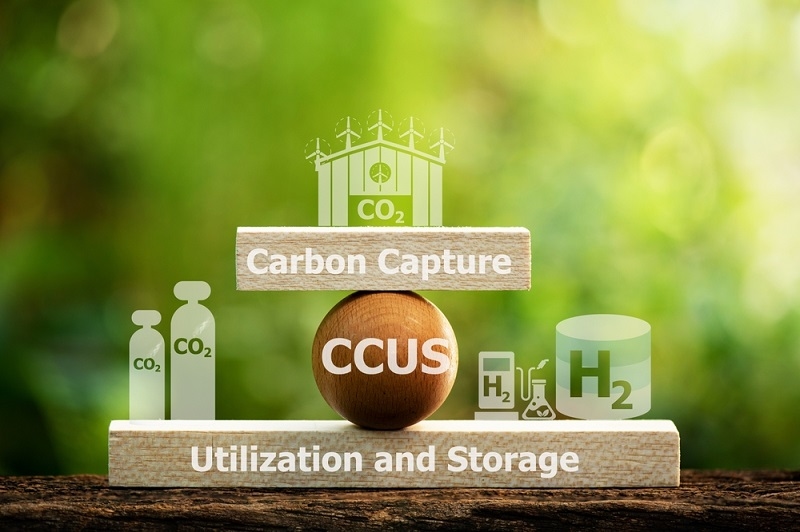
Net-zero isn’t just a climate slogan, it’s a deadline. While clean power, electric everything, and behavioral tweaks get most of the airtime, carbon capture is the gritty tool that’s quietly expected to fill the gaps. So, what is carbon capture? In its simplest form, it’s the process of snagging carbon dioxide from smokestacks or straight out of the air and stopping it from joining the atmosphere’s heat-trapping party.
That carbon is either pumped deep underground or rerouted into products (we’ll get to carbon capture and utilization in a minute). But the bigger point is this: without carbon capture, hitting net-zero by 2050 isn’t just difficult, it’s mathematically impossible. The real question is, can it scale fast enough without becoming a distraction or fossil-fuel bandaid?
Let’s break down the main carbon capture technologies currently being deployed (or hyped):

This is retrofitting 101. Factories or power plants bolt on equipment that scrubs CO? from flue gas using solvents like amines. It’s clunky and energy-hungry but widely understood — making it the flagship among early carbon capture technologies.
Here, fuels are burned in pure oxygen or converted to hydrogen and CO? first. These systems produce cleaner exhausts, making CO? easier to isolate. However, they often require redesigning entire facilities.
This is the cool kid — pulling CO? directly out of ambient air. Technically futuristic. Financially brutal. Direct Air Capture is still expensive (think hundreds of dollars per ton), but climate models lean on it heavily for “negative emissions” as part of long-term carbon capture strategies.
From calcium looping to electrochemical capture — newer carbon capture technologies are climbing out of labs, promising lower costs and faster scalability. The truth? Most are still chasing commercial proof.
Discover More: How Nanotechnology Is Driving Innovation in Medicine
Now to the moneymaking angle: carbon capture and utilization (CCU). Instead of burying captured CO? forever, CCU players use it to make new products — methanol, plastics, urea fertilizer, synthetic fuels, concrete, carbonated drinks, you name it. The appeal is obvious: you don’t just pay to hide CO?, you sell it.
Trouble is, the moment those products are burned or disposed of, that CO? usually makes its way back into the atmosphere. So while carbon capture and utilization sounds like a closed loop, it’s often just delayed release with better PR. That said, certain use cases — like mineralizing CO? into cement or injecting it into long-lived materials — offer real permanence. But industry needs to stop badge-slapping CCU as a blanket solution.
The internet wants a clean villain or hero story. Reality rarely plays along. So — is carbon capture good or bad? Depends entirely on how it’s used.
So is carbon capture good or bad? — it lands somewhere in the messy middle. A powerful ally when deployed strategically. A dangerous crutch if treated as a cure-all.
Must Read: Top 10 Tips: The Neuroscience Behind Your Morning Routine
Even with wind turbines spinning, solar panels sprawling, EVs humming, and diets greening — some emissions simply won’t budge. That’s why most serious net-zero roadmaps (IPCC, IEA, UN) build in carbon capture as a must-have, not a maybe. It acts like a vacuum cleaner: less sexy than solar, but often way more vital when tackling leftover CO? in stubborn sectors.
Critically, carbon capture and utilization can soften the economic blow by giving CO? a second life — something policymakers love. But to prevent greenwashing, two things need to happen:
All of this means carbon capture isn’t just an engineering feat — it’s a governance, finance, and public-trust game too.
For carbon capture technologies to support net-zero in a real, not theoretical, way — deployment needs to explode (in scale, not literally).
Here’s what works:
So, looping back — what is carbon capture? It’s a targeted technology meant to snag CO? before it causes more climate chaos. Done right, it’s essential. Done wrong, it’s a luxury shield for polluters.
The uncomfortable truth is this: getting to net-zero without carbon capture technologies is near-impossible within current industrial systems — but using them poorly could push us further away from decarbonization, not closer. That’s why the “is carbon capture good or bad?” debate is itself too binary. It’s as good (or as bad) as the policies and intent behind it.
Carbon capture and utilization, in particular, will need stronger scrutiny — if CO? used in fuels or plastics ends up back in the air, it’s circular marketing, not real climate progress. Yet if we start using CO? to manufacture long-lasting cement, stone, or infrastructure — it becomes a tool for permanence.
You may like: How Science Expands the Search for Extraterrestrial Life
In the end, carbon capture shouldn’t be viewed as a silver bullet — it’s more like a sledgehammer. Wrong hands, wrong aim — it’s destructive. Used surgically on the toughest industrial emissions and backed by honest targets, it can buy time and pull down numbers we know we can’t eliminate otherwise.
As net-zero moves from boardroom talk to bottom-line action, carbon capture technologies are about to face their biggest test: deliver real results — or be exposed as a shiny excuse. The climate can’t afford the latter.
This content was created by AI